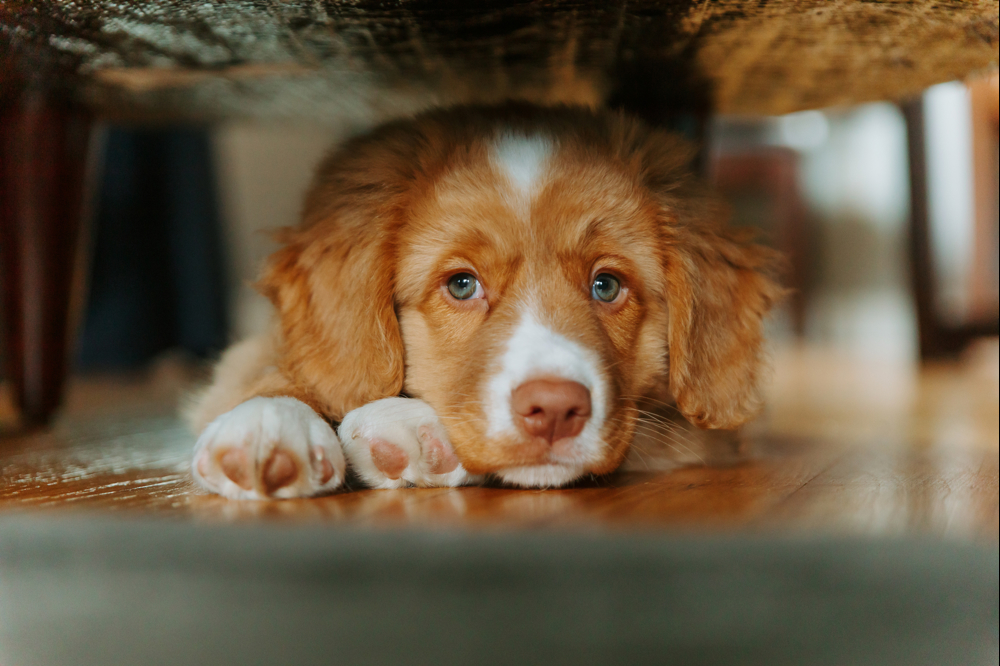
Despite the name, ringworm actually has nothing to do with worms at all. Ringworm in dogs is actually a fungal infection. It can cause small circular patches of hair loss in dogs, hence where the ‘ring’ part of the name comes from.
Ringworm in dogs is a condition that’s not always easy to spot initially. But it’s important to treat it as early as possible, as it can lead to secondary infections and can even spread from dogs to humans.
Early stage of ringworm in dogs
Ringworm is caused by a type of fungi called dermatophytes, which thrive in warm, moist environments. Think of it as the dog version of athlete’s foot. The condition is highly contagious, as the fungal spores that cause ringworm in dogs can live for 18 months in the natural environment. But a dog (or human) needs to have broken skin in order to catch ringworm - if their skin is healthy and intact, they won’t pick it up.
Ringworm is spread when a dog (or human) either comes into contact with an infected pup or person, or contaminated items, like carpets, bedding, soft furnishings or food/water bowls. Fungal spores primarily spread when dogs shed infected hairs.
Early on, ringworm in dogs may not show any visible signs to watch out for. Initially, the fungal spores may be present on the skin or hair without causing an issue. However, the hair shafts and outer layer of skin slowly become affected by the fungus, which leads to more obvious symptoms.
Symptoms of ringworm in dogs
- Hair loss in a circular pattern: This is a hallmark symptom to watch out for. These small, around, hairless patches begin as small and scaly, and slowly increase over time.
- Inflammation and redness: Infected areas may appear red, inflamed and raised slightly. Your dog’s fur may mean that you don’t notice these skin changes at first, so be sure to take the time to regularly give your dog a thorough once over.
- Skin that is crusty or flaky: Ringworm in dogs can cause skin to become crusty, scaly and dry. This will be most noticeable in the centre of the circular patches of hair loss.
- Itching: Ringworm in dogs can also make your dog scratch secondary bacterial infections.
- Broken or brittle hair: Ringworm in dogs affects the hair shafts, so hair can become brittle, or may break easily. It might look as though the hair has been clipped.
How to treat ringworm in dogs
If you think your dog may have ringworm - don’t delay! It’s important to get a diagnosis and a treatment plan from your vet as soon as you can. Your vet is likely to recommend the following plan of attack:
- Antifungal medications: These are the primary treatment for ringworm in dogs, and can come in the form of shampoos, topical creams or oral medications, depending on how severe the infection is.
- Isolation: Given how contagious ringworm is, your dog may need to be isolated until they’ve finished their treatment, so the infection doesn’t spread to other dogs or humans.
- Disinfection: Your home will need a deep clean and disinfection. That includes your dog’s bedding, toys and all their favourite corners of the house. Hoover carpets and soft furnishings regularly, and be sure to throw the vacuum bag away, or empty the dust container outside, so the fungal spores don’t continue to spread.
- Bathing with antifungal shampoo: Your vet may recommend regular baths with medicated shampoo to eradicate the fungus from your dog’s skin and fur.
- Reduction of humidity at home: Fungus loves humid, moist environments, so you may need to invest in a dehumidifier in order to help control the environment.
- Keep an eye on your dog’s progress. If you see any symptoms progressing or worsening, contact your vet immediately.
Untreated ringworm in dogs
It’s very important to treat ringworm in dogs as soon as you spot the symptoms. If left untreated, ringworm in dogs can lead to serious health consequences. Here are some key reasons why you shouldn’t underestimate this fungal infection:
- Left untreated, ringworm in dogs can spread to other parts of your dog’s body, making it more difficult to treat.
- Ringworm is zoonotic, which means that it can spread from dogs to humans. Untreated ringworm can soon make its way through the household and beyond.
- Untreated ringworm can lead to chronic skin issues, which will make your dog feel miserable.
- Your dog can pick up secondary infections, due to excessive itching, scratching and licking, which means additional treatment and further complications.
- The longer you leave ringworm in dogs, the longer it will take for them to recover from the condition.
Article author
Content provided by Agria Pet Insurance.
With a Kennel Club Pet Insurance policy, you have up to £15,000 of cover available every year towards the cost of vet fees, taking the worry away from getting your dog back to the best health.
Find a vet near you
If you're looking for a vet practice near you, why not visit the Royal College of Veterinary Surgeons' Find a vet page.
Think your dog may be affected?
If you're worried about your dog's health, always contact your vet immediately!
We are not a veterinary organisation and so we can't give veterinary advice, but if you're worried about any of the issues raised in this article, please contact your local vet practice for further information
